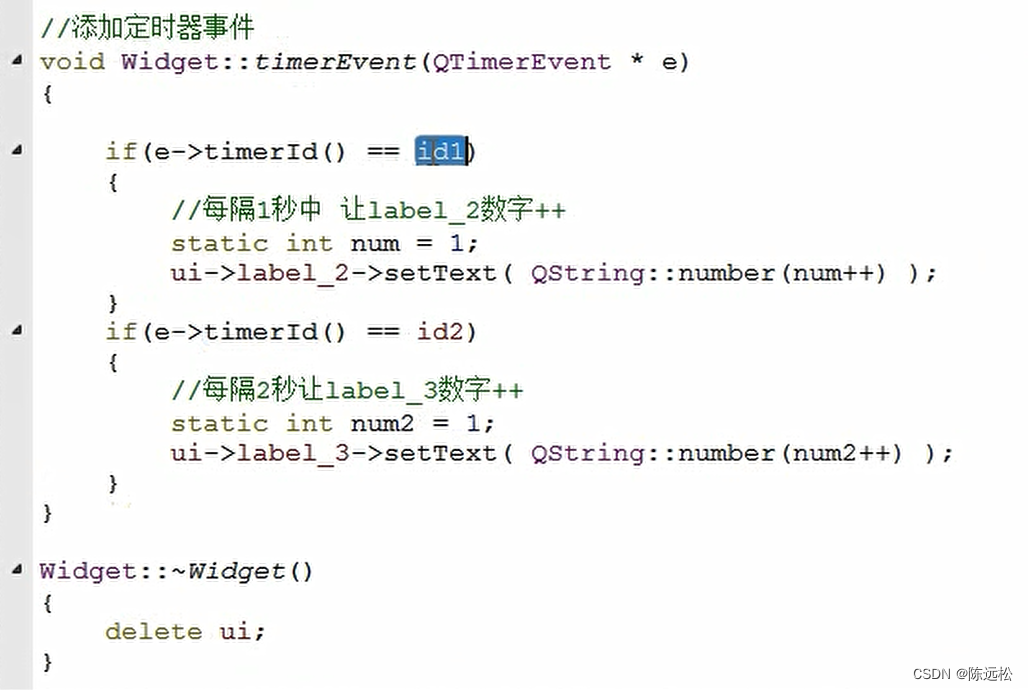基础
// 指定了父对象, 创建的堆内存可以自动析构
QTimer::QTimer(QObject *parent = nullptr);// 根据指定的时间间隔启动或者重启定时器, 需要调用 setInterval() 设置时间间隔
void QTimer::start();// 启动或重新启动定时器,超时间隔为msec毫秒。
void QTimer::start(int msec);// 停止定时器。
void QTimer::stop();//当定时器超时时,该信号就会被发射出来。
[signal] void QTimer::timeout();// 设置定时器时间间隔为 msec 毫秒,默认值是0。
void QTimer::setInterval(int msec);// 获取定时器的时间间隔, 返回值单位: 毫秒
int QTimer::interval() const;
设置定时器精度
void QTimer::setTimerType(Qt::TimerType atype); // 设置定时器的精度
参数: - Qt::PreciseTimer -> 精确的精度, 毫秒级- Qt::CoarseTimer -> 粗糙的精度, 和1毫秒的误差在5%的范围内, 默认精度- Qt::VeryCoarseTimer -> 非常粗糙的精度, 精度在1秒左右Qt::TimerType QTimer::timerType() const; // 获取当前定时器的精度
在这里插入代码片
其他API
// 如果定时器正在运行,返回true; 否则返回false。
bool QTimer::isActive() const;// 判断定时器是否只触发一次
bool QTimer::isSingleShot() const;// 设置定时器是否只触发一次, 参数为true定时器只触发一次, 为false定时器重复触发, 默认为false
void QTimer::setSingleShot(bool singleShot);
小案列1
效果

思路
//设置界面实时时间QTimer *timer = new QTimer(this);timer->start(1000);//启动定时器connect(timer, &QTimer::timeout, [=](){QTime time = QTime::currentTime();//获取当前时间QString str = time.toString("hh:mm:ss");ui->label_curTime->setText(str);//显示到界面});
小案列2
使用QTimer类中的 全局静态 函数,实现延时。
[static] void QTimer::singleShot(int msec, const QObject *receiver, PointerToMemberFunction method);
功能: 在 msec 毫秒后发射一次信号, 并且只发射一次
参数:- msec: 在msec毫秒后发射信号- receiver: 接收信号的对象地址- method: 槽函数地址
思路
//延时300毫秒,切换窗口
QTimer::singleShot(300, this, [=](){// 延时300毫秒this->hide();//隐藏主窗口chooseScene->show();//显示其他窗口
});
其他方法使用定时器
返回定时器 Id

重写定时器事件,利用 定时器 id 判断是哪一个定时器

详细教程可转
爱编程的大丙

)













- ACodec(三))



